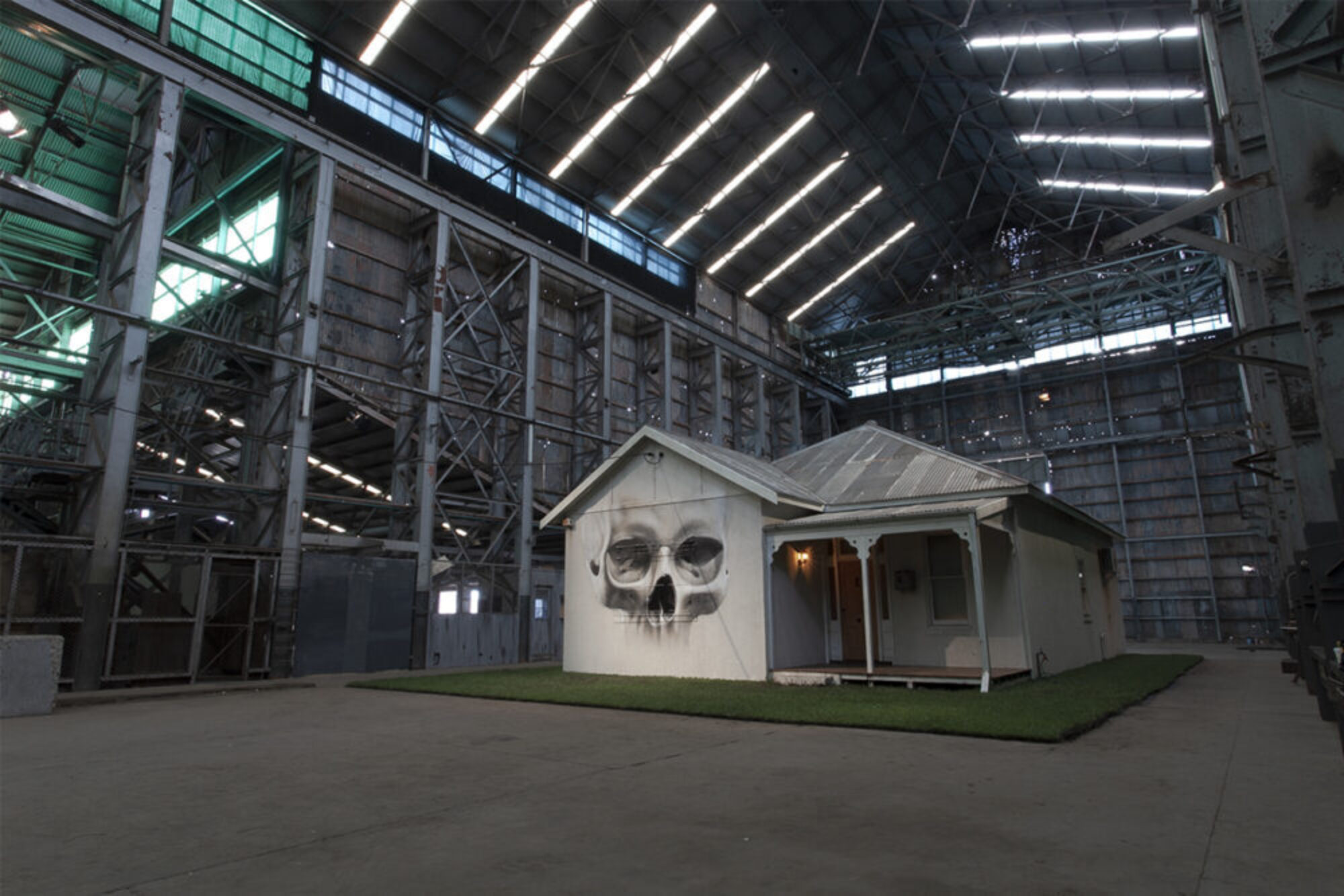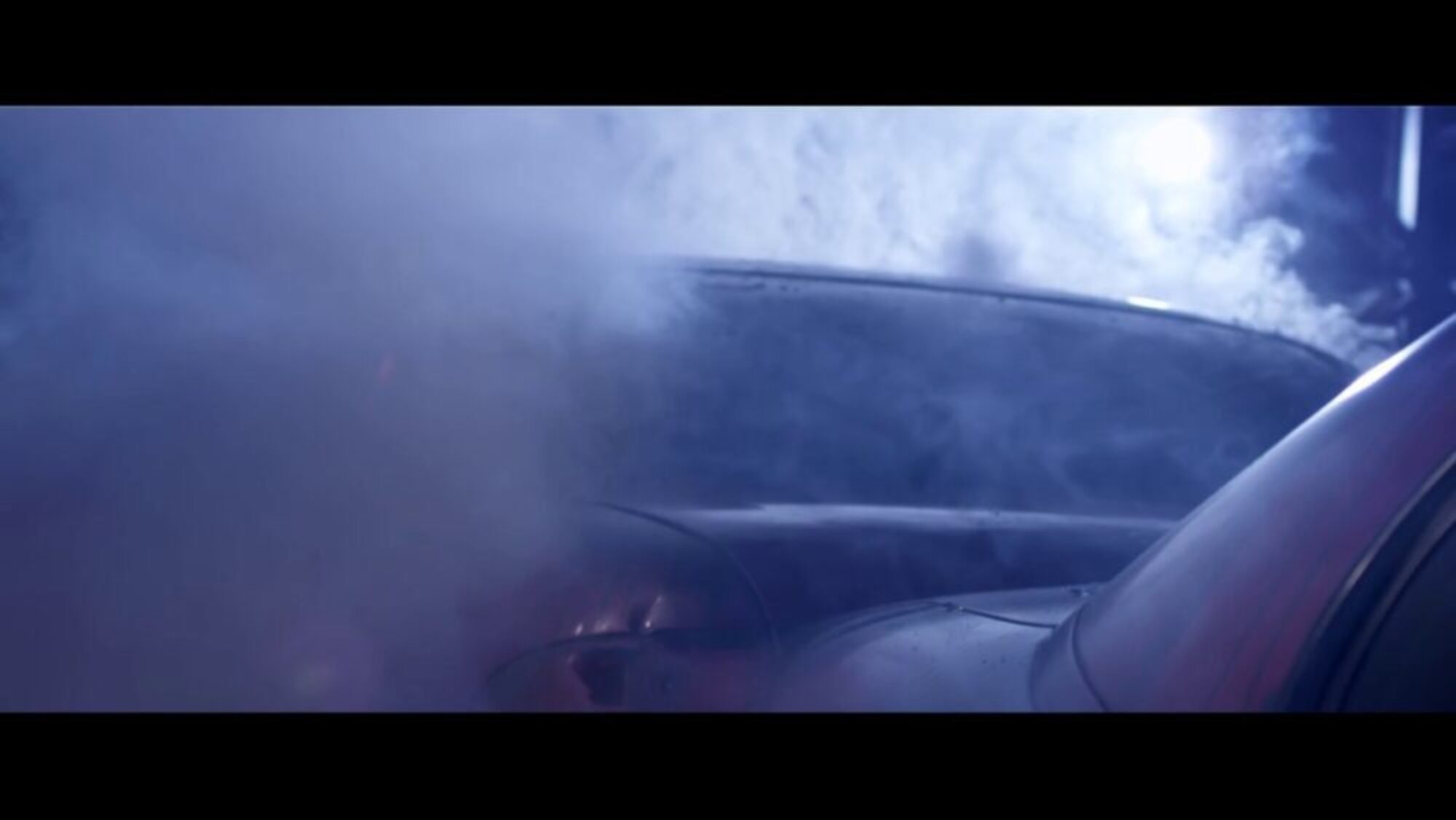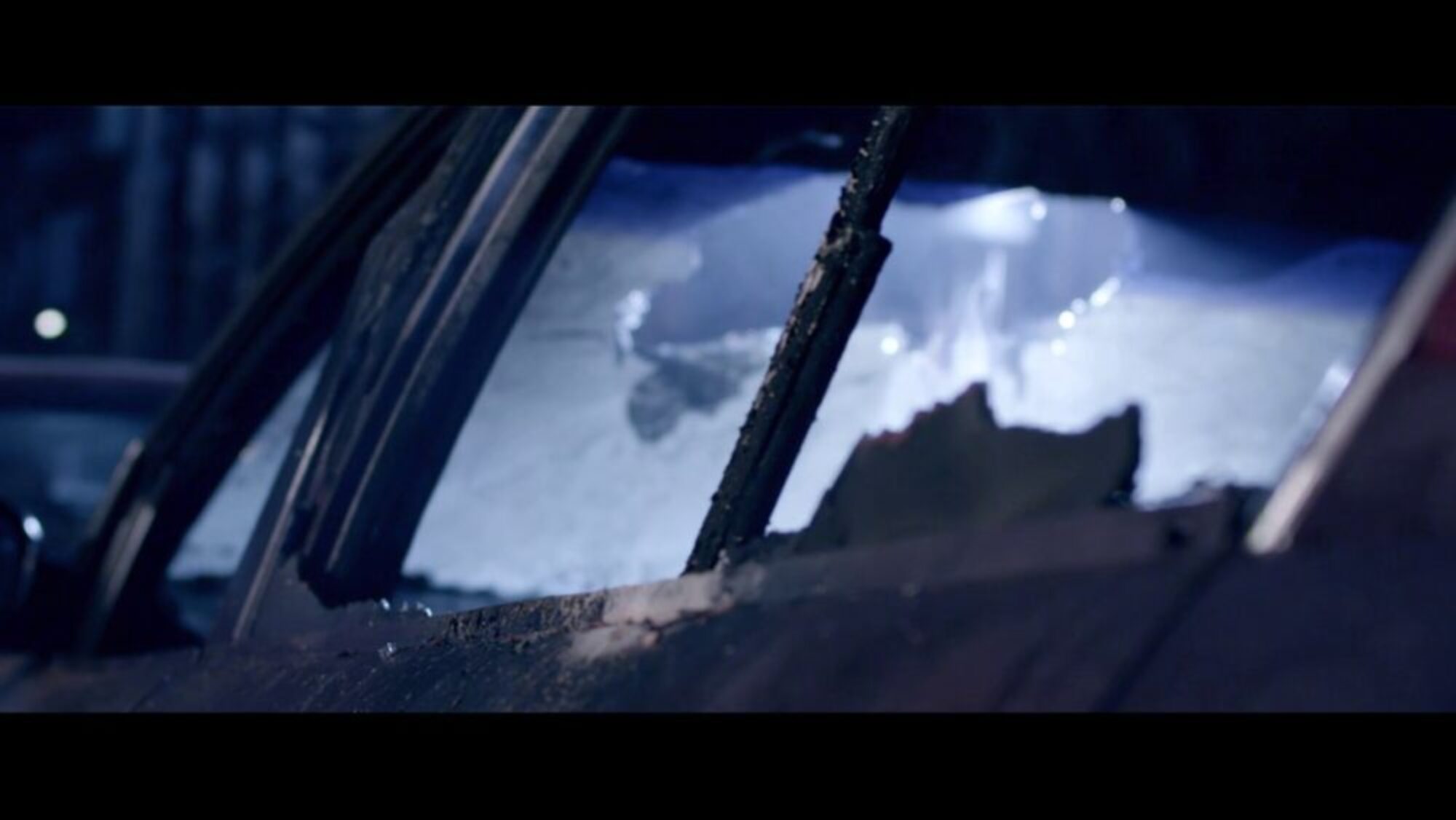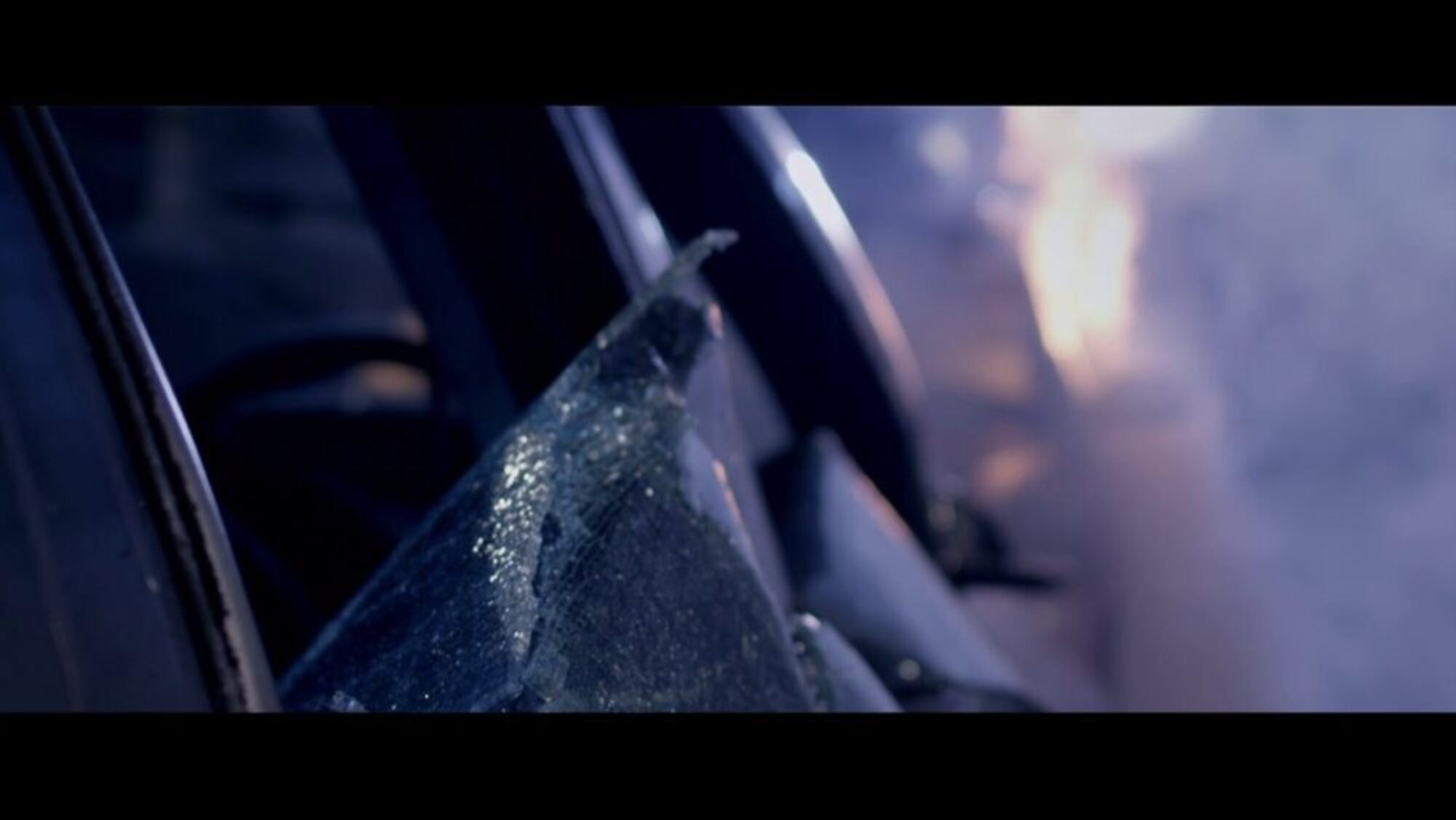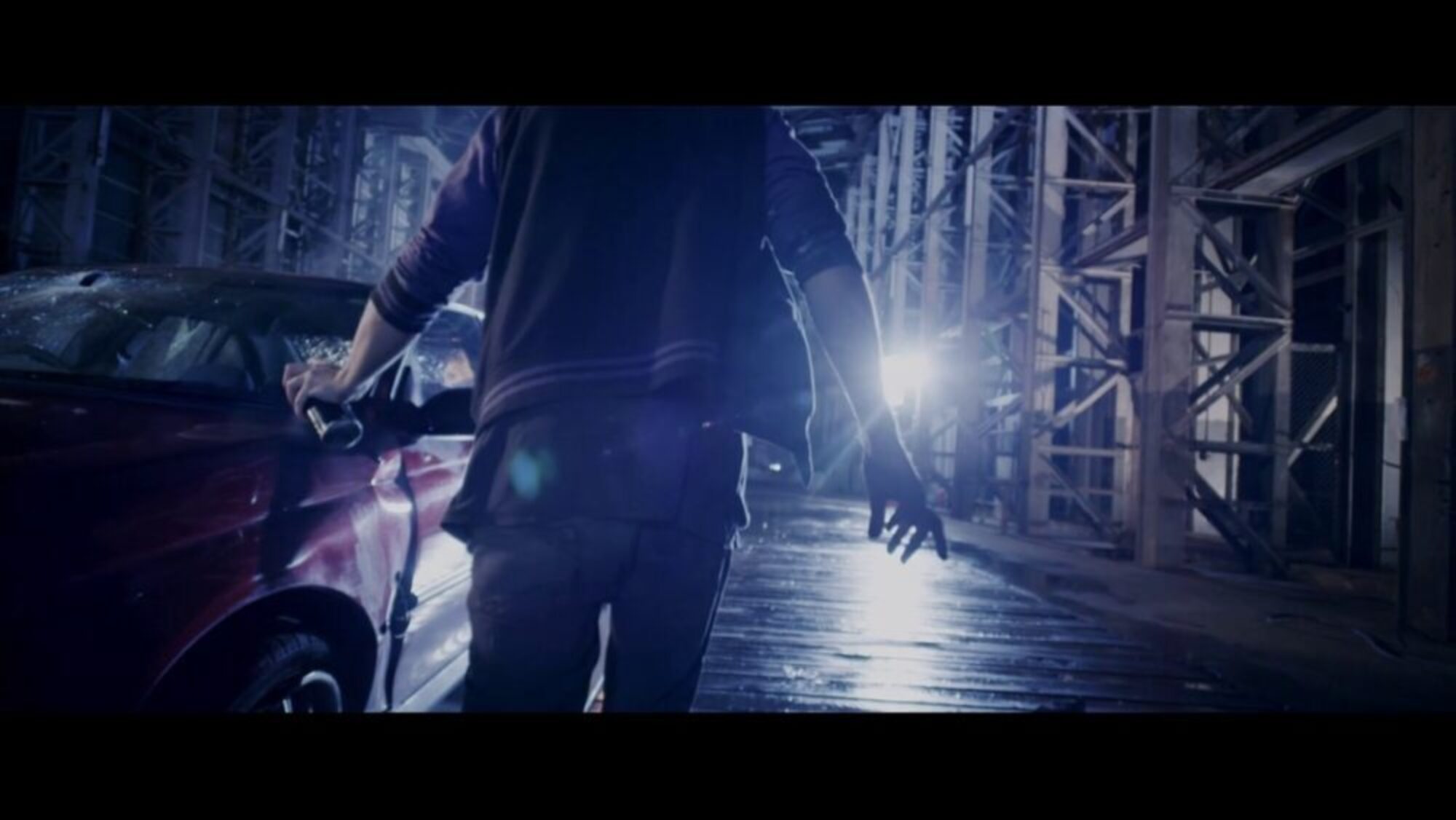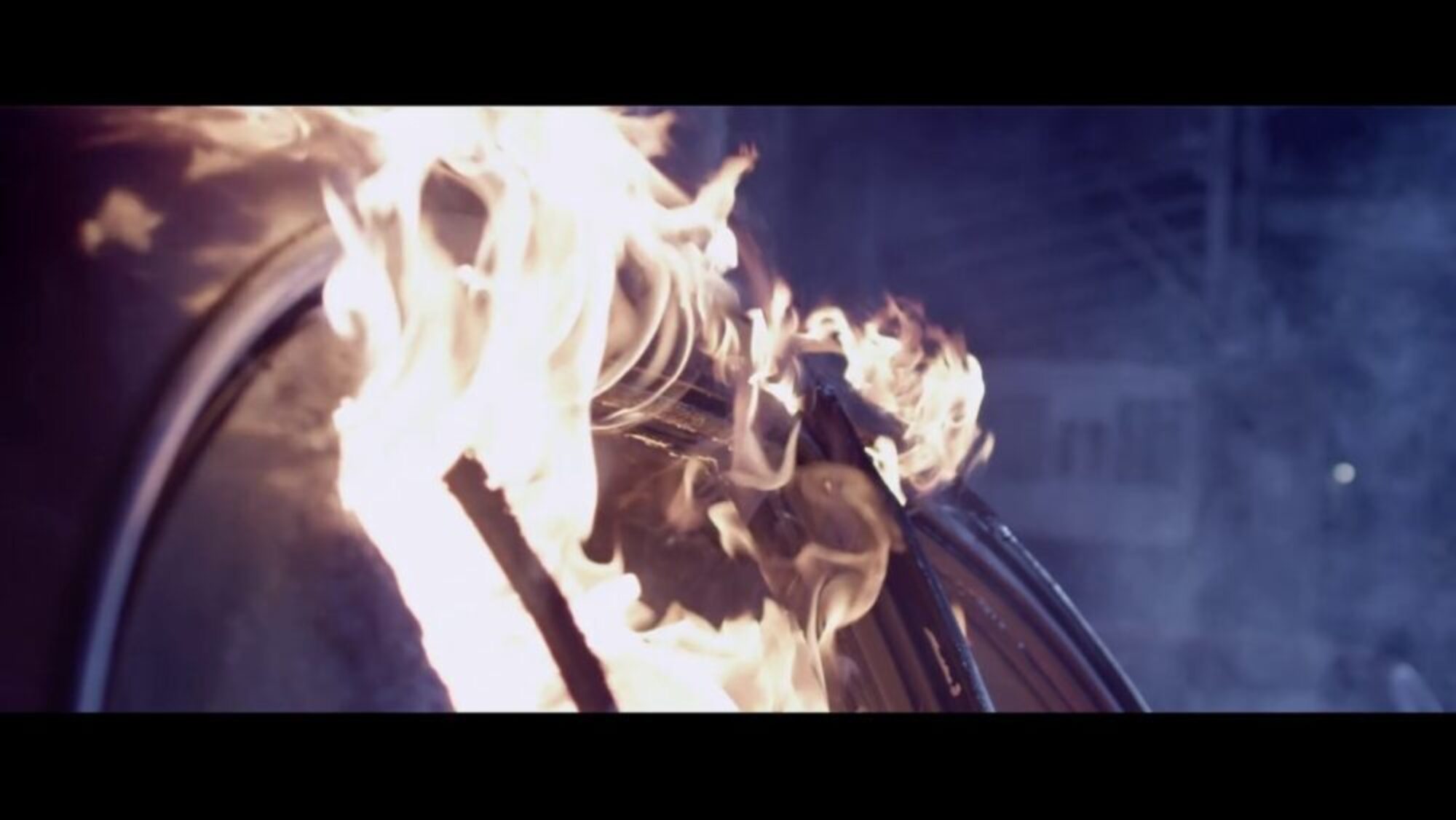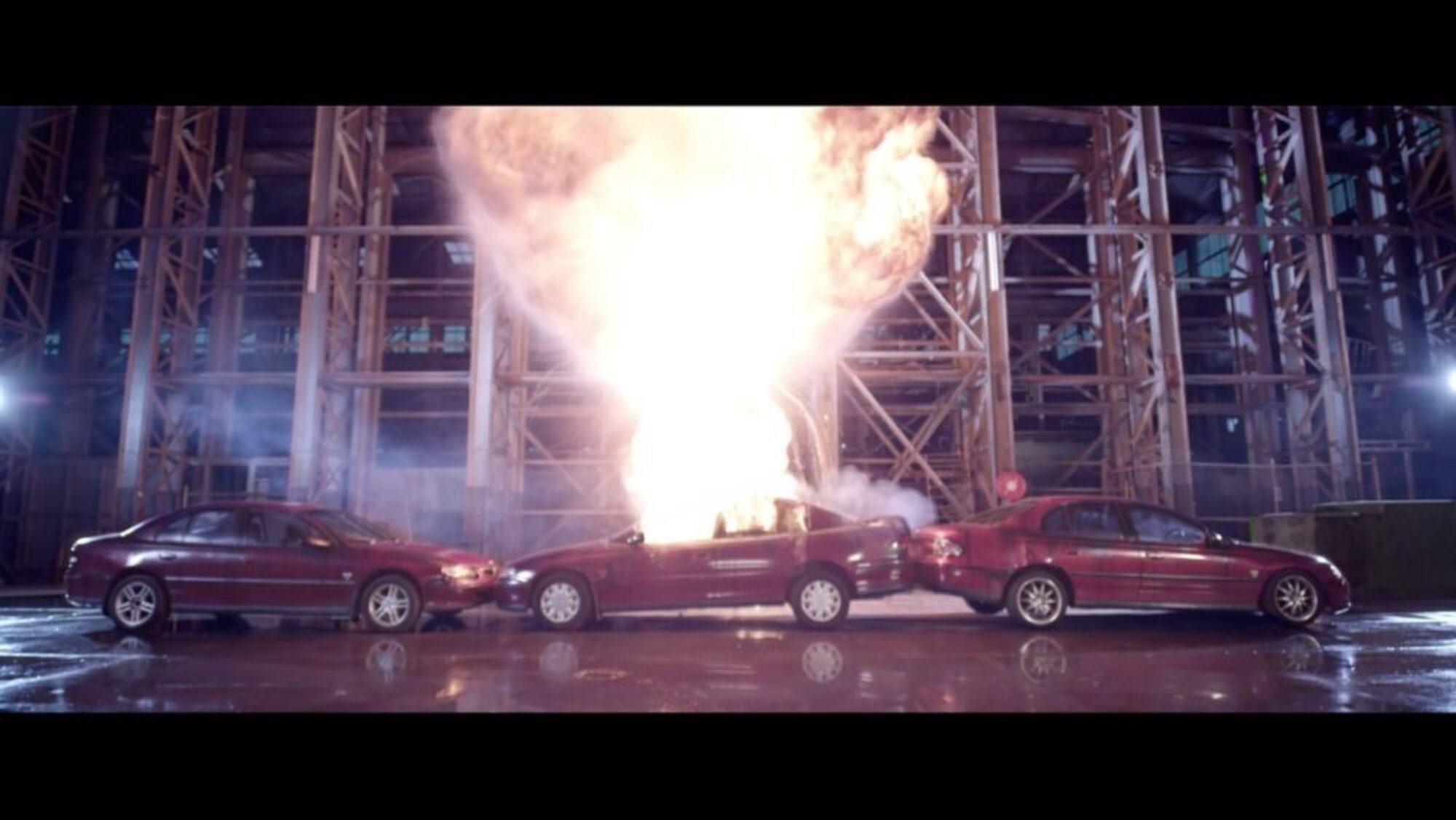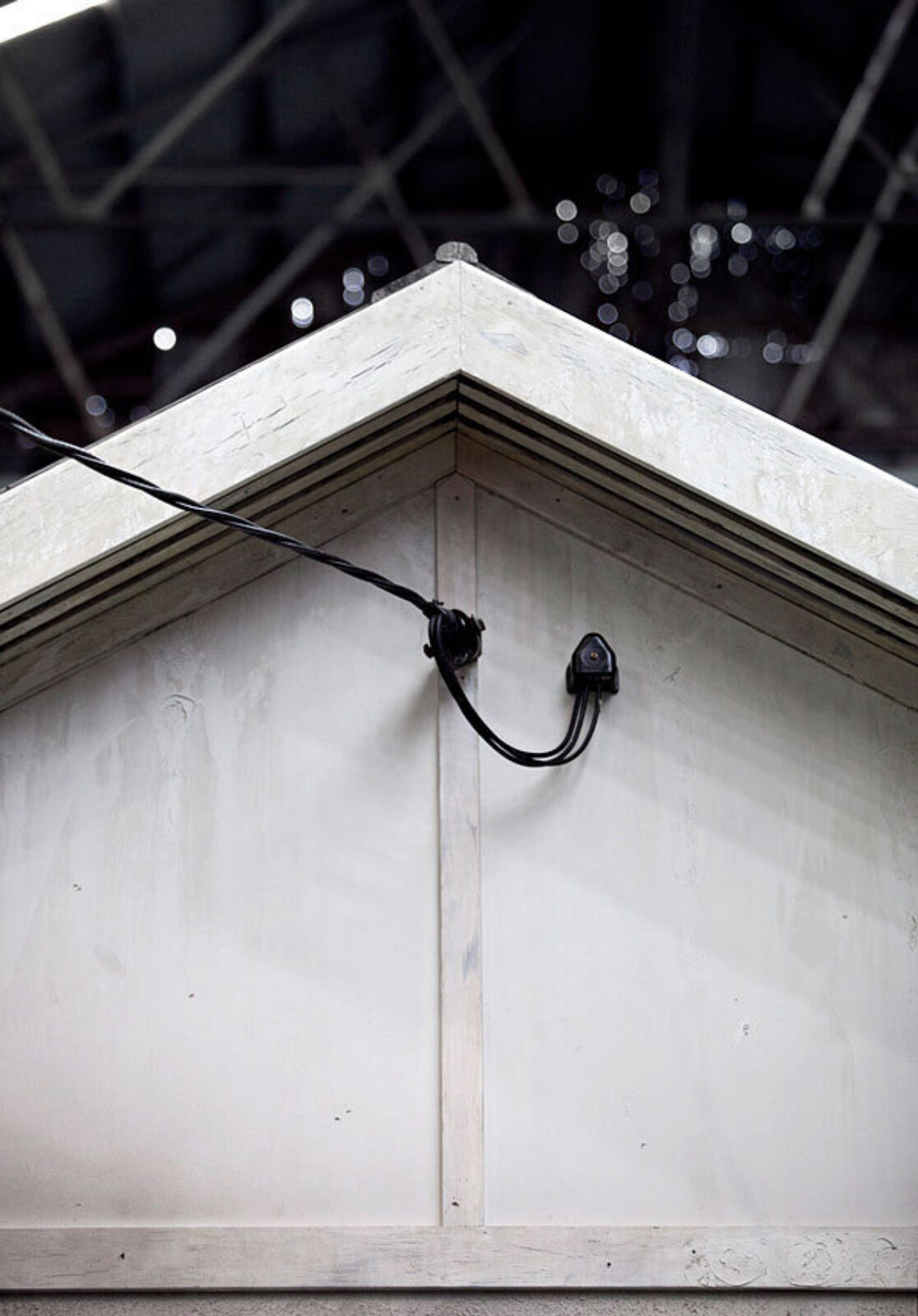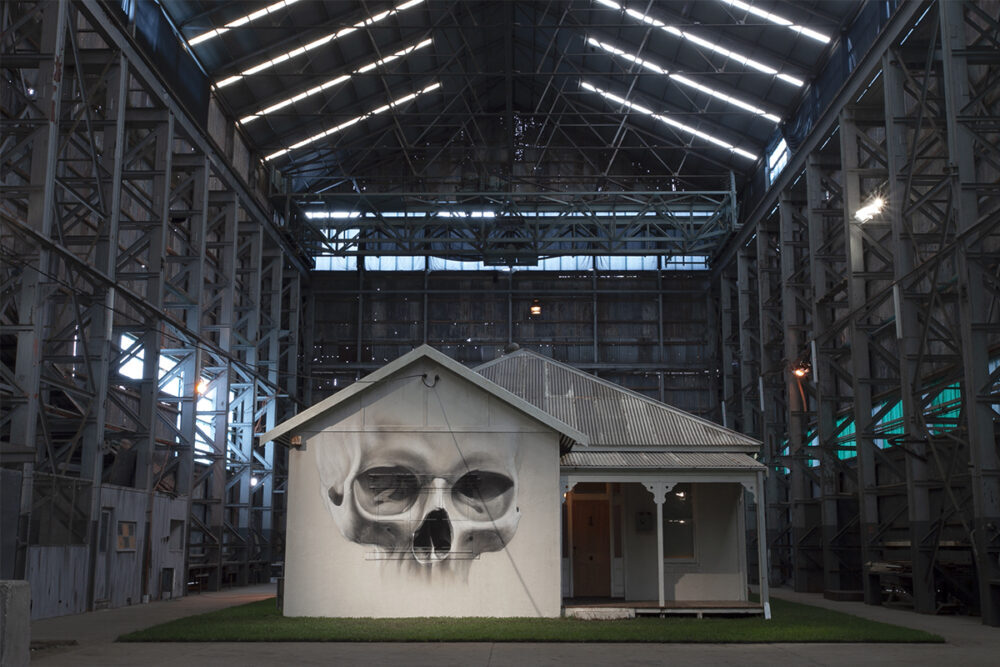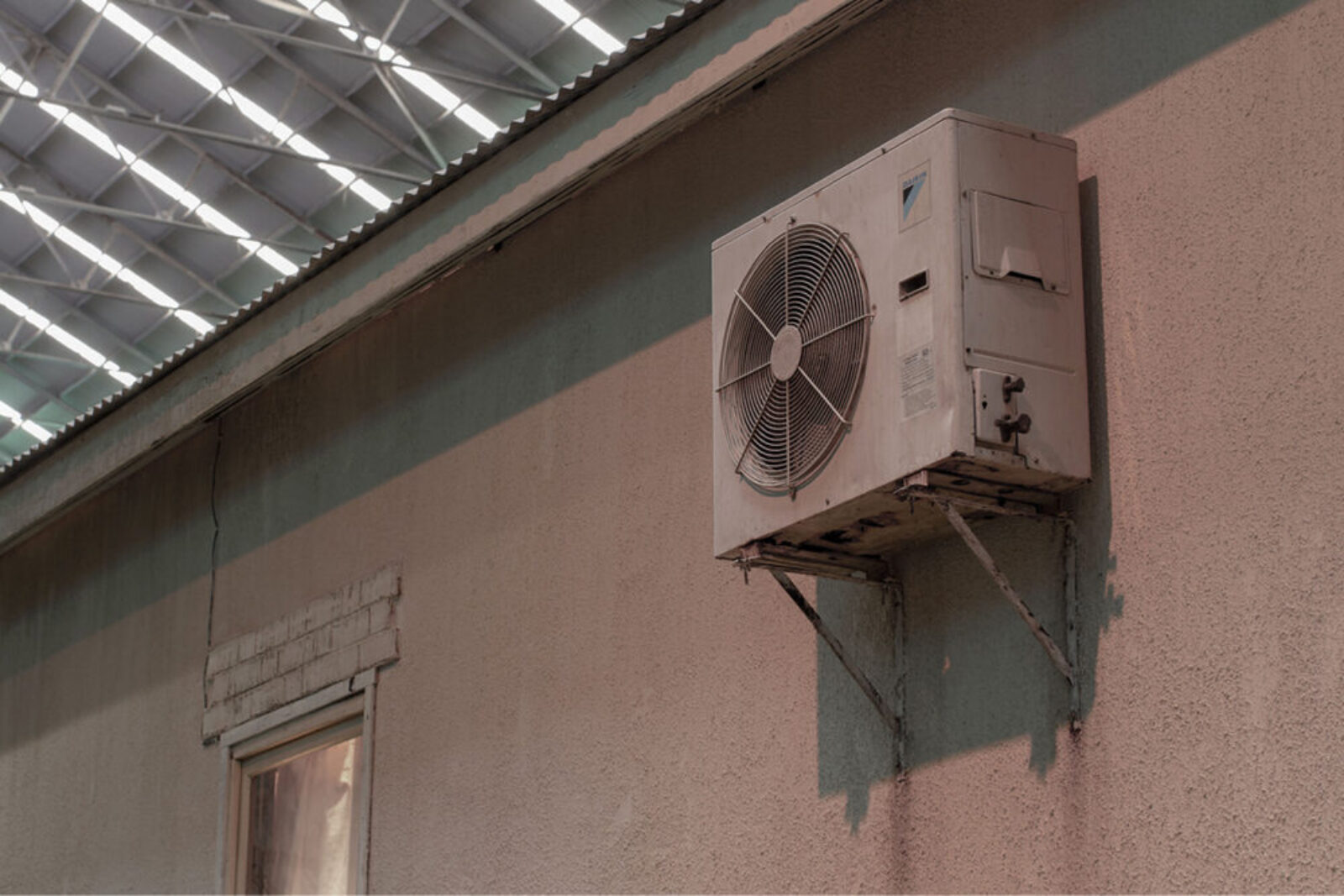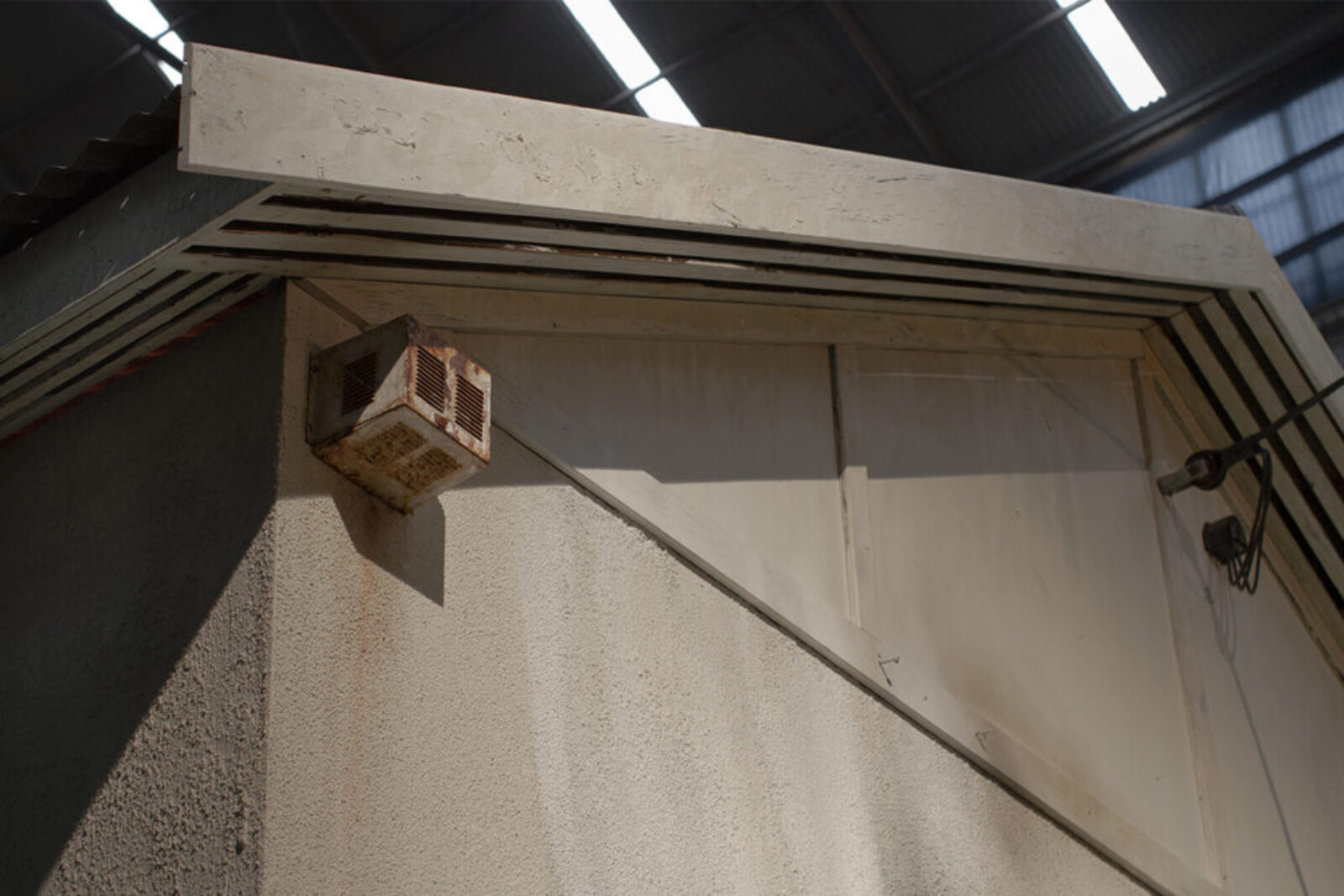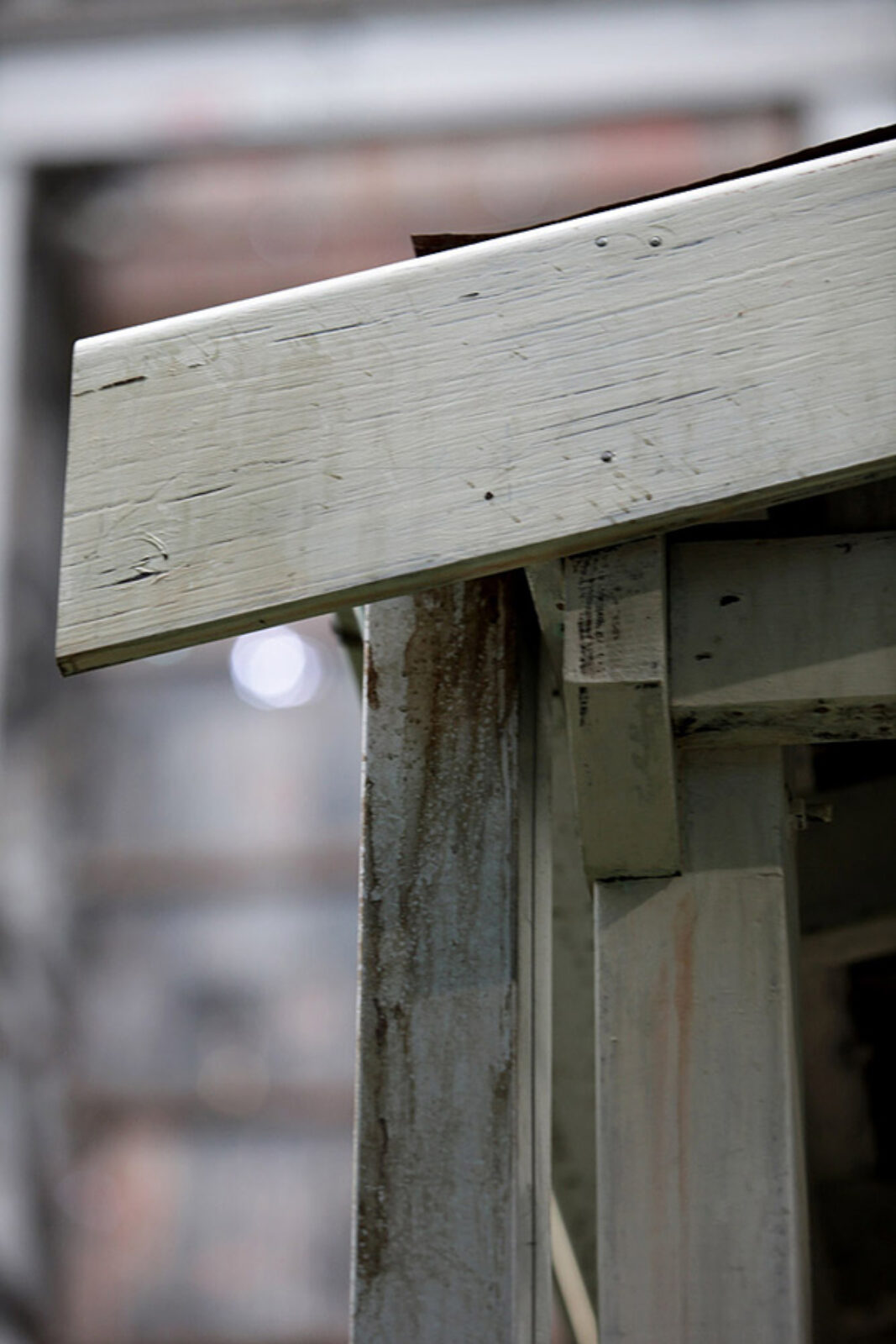HOME, 2011
Site-specific sculpture, installation, and film work.
HOME was a site-specific sculpture, film, and installation work comprising a to-scale replica of Strange’s childhood home rebuilt from early adolescent memory, and three destroyed Holden Commodore cars. The interior of the HOME installation was transformed into a public film space which featured the Untitled single-channel film work and sound installation.
The work premiered in 2011 at the Turbine Hall on Cockatoo Island, a UNESCO World Heritage Site located in Sydney Harbour.
Ian Strange: HOME
November 4 - December 11, 2011
Turbine Hall, Cockatoo Island
Sydney, Australia
Film Work
Sculpture & Installation
Writing
ESSAY: 'Tell the World I’m Coming Home'
by Simone Douglas
Originally published October, 2011
ESSAY: 'Tell the World I’m Coming Home'
by Simone Douglas
Originally published October, 2011
Tell the World I’m Coming Home
by Simone Douglas
Sometime when my own body began to change and I discovered the first signs of manhood upon me, the child left and did not reappear. Though I dreamt of him often enough in those early years, and have done so since. I have forgotten the language we used, and if he were to reappear, perhaps we could no longer communicate. Did he have some message for me then? If so he failed to deliver it. Or did so and it has slipped my mind. Or the language he used on whatever occasion it was has already passed my understanding and could not be translated into daily speech. I believe I think I have always believed that he will come again. But in what guise? As a child still? As a man my own age? As a wolf? Or has he the power to adopt other forms as well? Has he already returned to me, perhaps, in a form so humble, so ordinary, that I failed to perceive his presence? – (i)
Across the dark blue waters of Sydney Harbour on an island, Cockatoo Island, is a house. A house that does not signify that quintessential Australian mythology, the grandeur of an endless horizon, but instead signifies and paradoxically so, as the house is built on small island, the close proximity of other houses, suburbia, the great Australian dream. It is a suburban house. This house has existed for a long time, at least a few life times; families have lived in it, children have grown up in it. This house has been the holder of secrets, hope, grief, desires, life and inevitably, death. It is our waking and sleeping dream.
The artist Ian Strange has manifested his childhood home as an island within an island, within a harbor, within a city, the opposite side of the island- continent of its place of origin, Perth. It is possible to feel the hush-rush of space and time collapsing. On first contact it would seem that the artist Ian Strange has re-built his child hood home, but more accurate to say that he has taken the marrow of the idea of home from his memory of his childhood house.
The house is a transmission of sorts. It is cinematic in idea. This house was never there.
The house on first encounter transmits signals that all is well, here is a house loved and lived in, worn down by years of robust family living. The concrete stairs leading up to the porch are cracked from decades of the passage of the inhabitants, of visitors, of belongings being carried into and out of the house. The grass, safely out of reach of the ubiquitous lawn mower (a staple in the Australian suburban dream) at the edge of the house is long and reaches up, seeking cavities in the house where the house itself has started to give way. The life force of the grass seeks the space inside, a space Strange denies us entry into. We can never enter this home although we know the house. What is home? comes to us in a slow burn of revelation, ‘all is well’ slowly dissipates into states of angst, into the DNA of our suburban dream.
At the front of the house is another suburban dream fixture, the car. Rumpled and omnipresent on a truncated segment of bitumen, the car is a signifier, and acutely so, for the unanswerable loss of youthful lives to car crashes. A growing pains suburban rite of passage gone wrong. A graffiti skull (a reference also to Strange’s career in NY where he initially became well known as a graffiti artist) is writ large across the front of house, a backdrop to the car. Strange uses conscious strategies to release the unconscious.
Strange’s acute understanding of the possibility of the visual is evident in his nuanced referencing of the sublime. In Edmond Burke’s theory of the sublime, the sublime is a state created by an intermingling of pleasure and terror, in which the ‘terror – causing’ threat must be held back. Burke’s threat is the threat of privation, the notion that we experience a feeling of terror at the possibility of privation . – (ii)
In Strange’s work, this fear, this privation, is expressed in the home not happening. The power line, the conduit of light and of mix masters, reaches out from the house but ends impotently in space, unconnected it is an undelivered promise. In the power box a red light emits a silent signal, a security light under the eve of the roof is function denied. All of these are reminders that stability is an illusion, a deceit. The viewer who cannot fail to be aware of this, is left exposed to the feeling of unease that is concomitant with the sublime experience the feeling that one is levitating on the lip of the abyss. In Strange’s work, the abyss is the suburban.
The suspense and lessening of the threat can then promote an intense feeling of relief, a form of pleasure, which Burke also refers to as delight. Strange moves us deftly between delight (the recognition of the familiar) and privation. This oscillation reaches a zenith at the back of the house. Where we may expect a welcoming back door entrance, the entry for family, close friends and neighbours, there is none. Instead the roof is missing and the house hollowed out to contain a white wall gallery. Entering up a stair into the gallery space and without the cover of a roof the viewer comes into contact with the skeleton of the house, the underside and beams of the house exposed. The slow burn again but then we are jolted from this state as we come into visual contact with a video of red suburban cars exploding. This catastrophic moment comes to us at light speed. It throws us into a perpetual oscillation between the opposing inner and outer fields of vision. The sides of the house like protective arms cradle the gallery but they are revealed to hold a powerful destructive force in the interior heart of the house.
Strange’s house is a doorstep from which every one has departed. A doorstep at which no one can arrive. Time is curved to form a circle.
Strange’s experience of living away from home in New York, of insider out, and his background as a graffiti artist (who are by their very nature an outsider), helped to form such an acute desire to question what is and when is home. Strange reaches into the deepest darkest wound of our suburban heart, our every day, our waking dreams. He finds the epic in the every day.
Down the dark suburban street I can see the house lit up like a cruise ship. Got it, she says before I can point it out. Feel free to slow down. – (iii)
Ian Strange joins other visionary artists, writers, film makers; Bill Henson, Tim Winton, Janet Frame, David Lynch to name but a few, who have reached into our suburban DNA and questioned the very notion of what is home. It is a significant human experience to know home, and in Strange’s work he powerfully suggests that the child disappeared, the shape shifter, the wolf, is in fact home.
—
Simone Douglas is an Associate Professor and Director of the MFA in Fine Arts Program at Parsons The New School for Design, The New School University, NYC. An Australian by birth she currently lives and works in NYC. She is represented in Sydney by Artereal Gallery.
Her visual work has been exhibited and widely including the Victoria and Albert Museum, London and her practice incorporates writing and curating including for Conveyor Magazine, The Getty Foundation and The Australian Museum.
—
i) Malouf, David, 1978. An Imaginary Life, Picador edition pub 1980 by Pan Books, Australia, p. 10, 11.
ii) Burke, Edmund. 2009 A Philosophical Enquiry into the Origin of Our Ideas of the Sublime and Beautiful. Oxford University Press, USA. This book was first published in 1757.
iii) Winton, Tim. 2008. Breath. Hamish Hamilton an imprint of Penguin Books, Australia, p.1
